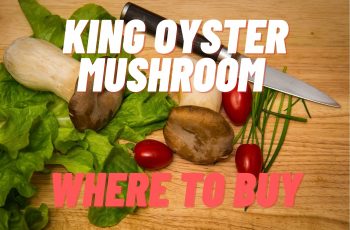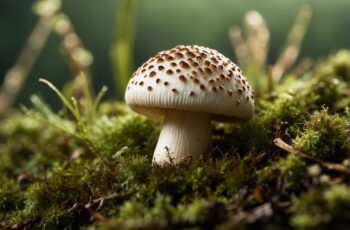Mushroom hunting in Virginia offers an abundance of foraging opportunities for you to explore. With its rich biodiversity and varied terrain, the Commonwealth is home to a wide variety of edible mushrooms just waiting to be discovered. Whether you’re a seasoned mycologist or a curious beginner, the forests and valleys of Virginia provide a fantastic backdrop for your mushroom foraging adventures.
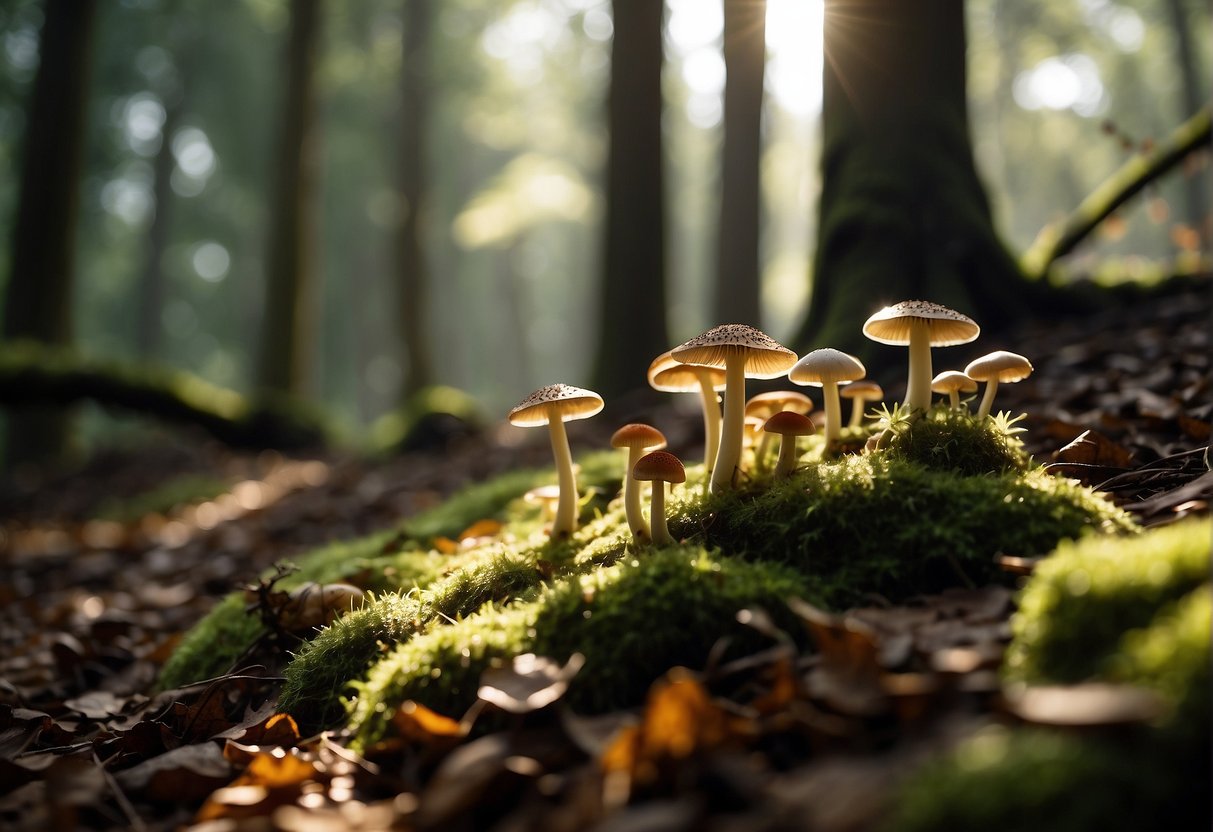
Navigating the woods of Virginia in search of mushrooms can be as rewarding as it is thrilling. Unlike more conventional hobbies, mushroom foraging combines the joy of the outdoors with the satisfaction of gathering food that can be used in your own kitchen. But it’s crucial that you know what you’re looking for; identifying mushrooms correctly is both an art and a science.
Before you set out on your journey, it’s important to familiarize yourself with the local guidelines and the different species you might encounter. This will ensure you forage responsibly and safely. With the right knowledge and a little bit of patience, you’ll find that Virginia is a forager’s haven, ripe with the potential of unearthing its fungal treasures.
Getting Started with Mushroom Hunting
Venturing into the forests of Virginia to hunt for mushrooms can be a rewarding experience. With the right knowledge and permits, you can safely explore the diverse fungi that the state has to offer. Let’s walk through the essentials to get you started on your mushroom hunting adventure.
Understanding the Basics
Before you head out, familiarize yourself with the types of mushrooms that grow in Virginia, like the Ringless Honey Mushroom or the sought-after morels. A reliable field guide is indispensable for proper identification and to avoid the very real risks of poisonous lookalikes.
Legal Requirements for Foraging in Virginia
If you’re planning to forage on public lands, make sure to obtain the necessary permits. A DWR Access Permit might be required if you’re entering wildlife management areas or state forests. Additionally, consider joining the “Restore the Wild Membership” for extended support in conservation efforts while you enjoy your foraging pursuits.
Safety and Ethical Considerations
As a beginner, it’s essential to prioritize safety by never consuming mushrooms unless you are 100% sure of their identity. Carry a compass or GPS device to navigate the woodlands with confidence. Moreover, practice ethical foraging; take only what you need and leave the area undisturbed for future foragers and wildlife.
Identifying Edible Mushrooms in Virginia
Venturing into mushroom foraging in Virginia can be a rewarding experience. Key to success is knowing which species to look for, understanding their preferred habitats, and recognizing the optimal seasons and climate conditions that affect their growth.
Popular Edible Species
In Virginia’s diverse woods, you’re likely to come across several sought-after edible mushrooms. Morels, distinguishable by their honeycomb-like appearance, are among the most prized. You might also find various chanterelles, including the vibrant golden chanterelle and the less common but equally edible red chanterelle. Don’t overlook the oyster mushrooms, found on the sides of trees, and the shaggy lion’s mane which resemble cascading white icicles. The umbrella-shaped parasol mushroom is another edible gem, though caution is advised as it has look-alikes that are not edible.
Habitats and Host Trees
Each mushroom species favors different habitats and host trees. Morels are fond of hardwood forests, especially around ash, elm, and apple trees. Chanterelles thrive in mossy woods often alongside oaks and beeches. You’ll find oyster mushrooms on dying or dead hardwood trees, and lion’s mane typically grows on wounded or decaying hardwoods. Parasol mushrooms prefer grassy clearings or edges of wooded areas. Always consider the aspect—the direction the site faces—as it affects temperature and light, key factors in mushroom growth.
Foraging Seasons and Climate
Timing is crucial in foraging. Spring, especially after a warm rain, is ideal for hunting morels. Meanwhile, the warmer summer months bring out chanterelles and oyster mushrooms. Fall is prime time for lion’s mane and parasol mushrooms. Remember, the temperature and altitude can influence when and where mushrooms grow. Look for a mix of warm days and cool nights, ample moisture, and fertile ground, as these growth conditions enhance the chances of a successful forage.
Preparing and Cooking Wild Mushrooms
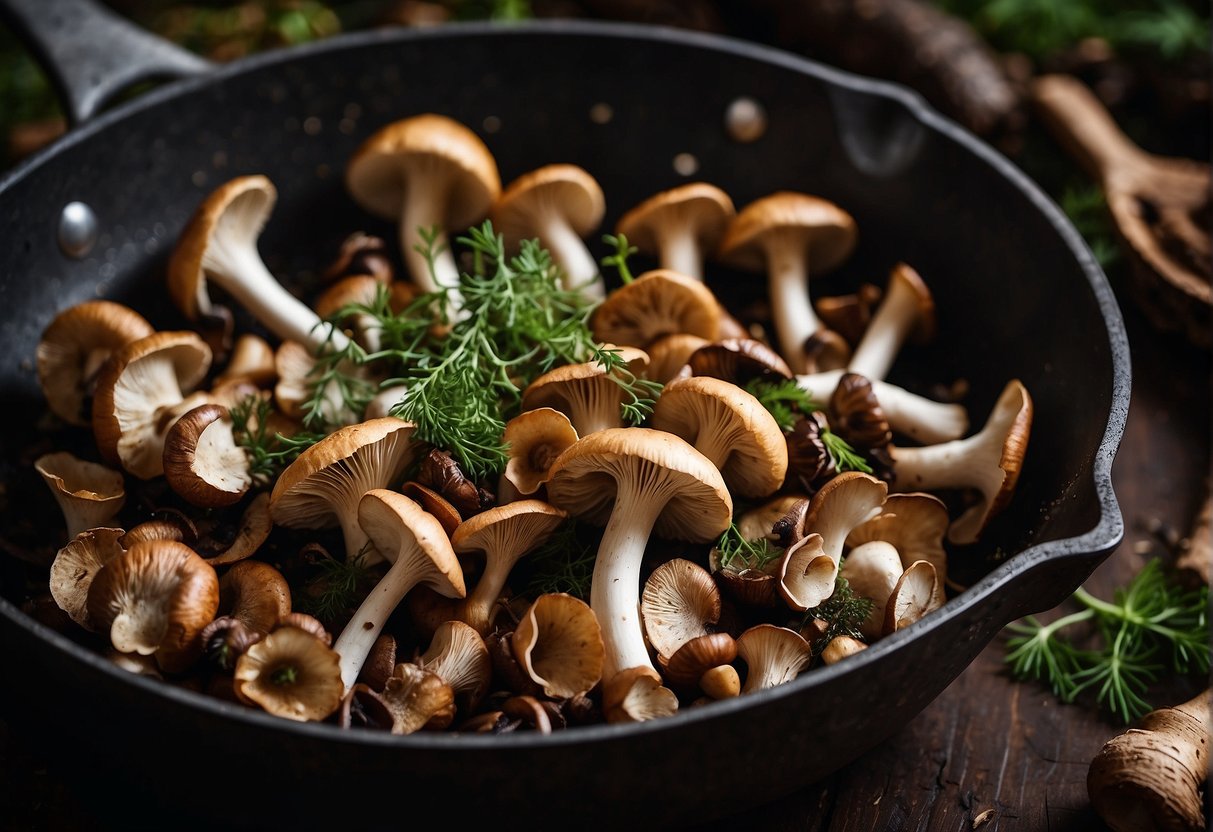
When you bring wild mushrooms home from the Virginia forests, preparing and cooking them properly is crucial to preserve their flavor and texture, ensuring they’re safe to eat. Always start with small portions to test for any adverse reactions.
Cleaning and Storage Techniques
Firstly, cleaning your wild mushrooms gently with a soft brush or a damp cloth is essential, as soaking them can cause them to become waterlogged and affect their texture. Store them in a paper bag — not plastic — to prevent moisture build-up and place them in the refrigerator. This method allows the mushrooms to “breathe,” keeping them fresh for your upcoming meals.
Cooking Methods and Recipe Ideas
Wild mushrooms have a range of flavors and textures that can elevate your dishes. Sauteing them in butter or oil is a simple yet effective way to enhance their natural tastes. You can incorporate them into a variety of recipes, from creamy risottos to robust stews. If you’re looking for specific ideas, consider a classic Virginia chanterelle mushroom soup or a rustic wild mushroom and herb frittata. Remember, thorough cooking not only develops their flavors but is also critical for edibility and safety.
Conservation and Community Involvement
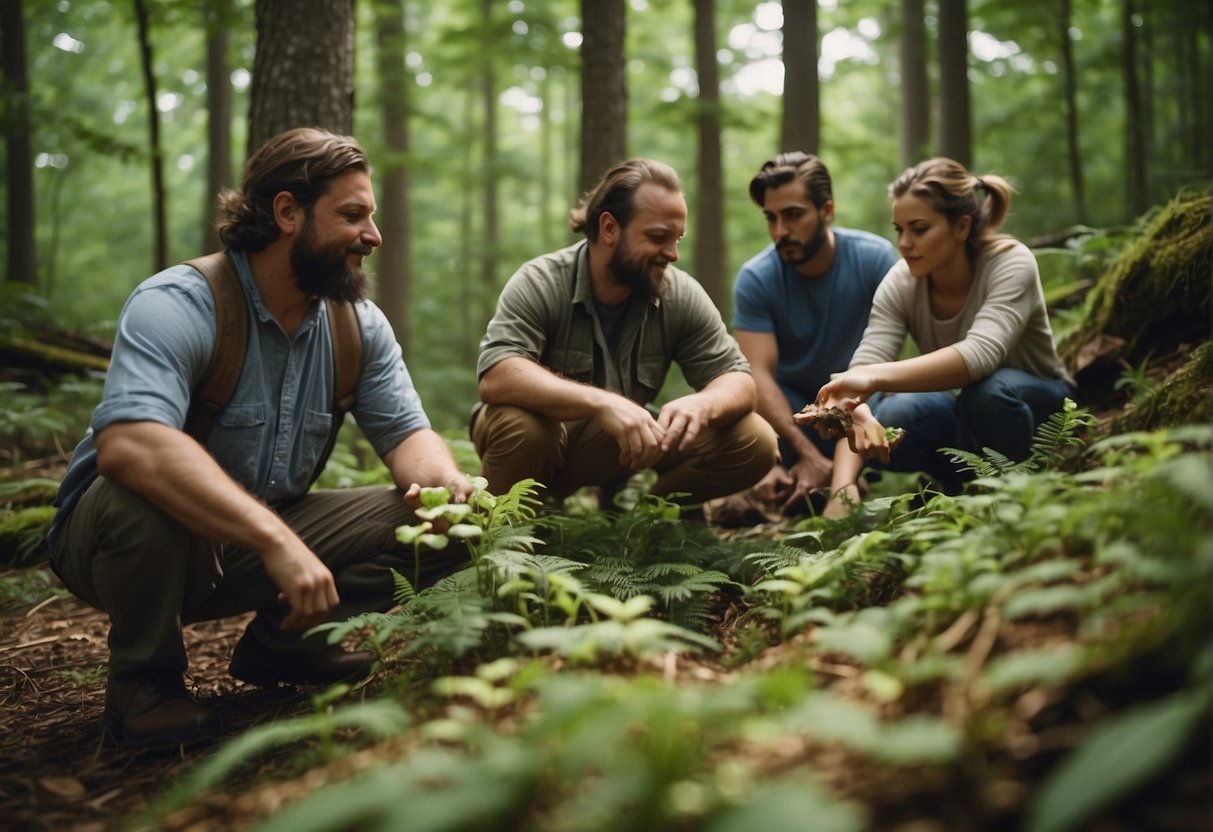
As you venture into the diverse ecosystems of Virginia in search of mushrooms, remember your role in conservation and the importance of engaging with local mycological communities. Your actions contribute to sustaining Virginia’s forests and wildlife management areas, and joining mycological societies can enhance your knowledge and impact.
Contributing to Mushroom Conservation
When you tread through national forests and wildlife management areas on your mushroom hunts, you support conservation by adhering to sustainable foraging practices. It’s essential to obtain and carry the appropriate permits, such as those for freshwater fishing or a trapping license, even if your primary goal is foraging. Familiarize yourself with regulations that govern the collection of mushrooms to ensure you’re not disrupting the delicate balance of these ecosystems. By doing so, you’ll help preserve the natural habitats for future generations of outdoorsmen and the diverse species that thrive within.
Joining Local Mycological Societies
Engagement with a local mycological society can significantly enhance your mushroom hunting excursions. These societies offer a wealth of knowledge, often led by seasoned mycologists, and provide a platform for you to share experiences and learn about the fungi specific to Virginia.
- Educational Workshops: Learn proper identification techniques and stay informed about local mushroom species.
- Community Projects: Participate in conservation efforts and citizen science projects that aid in wildlife and habitat preservation.
By connecting with these societies, you not only gain expertise but also contribute to communal efforts in conserving Virginia’s rich mycological landscape.

